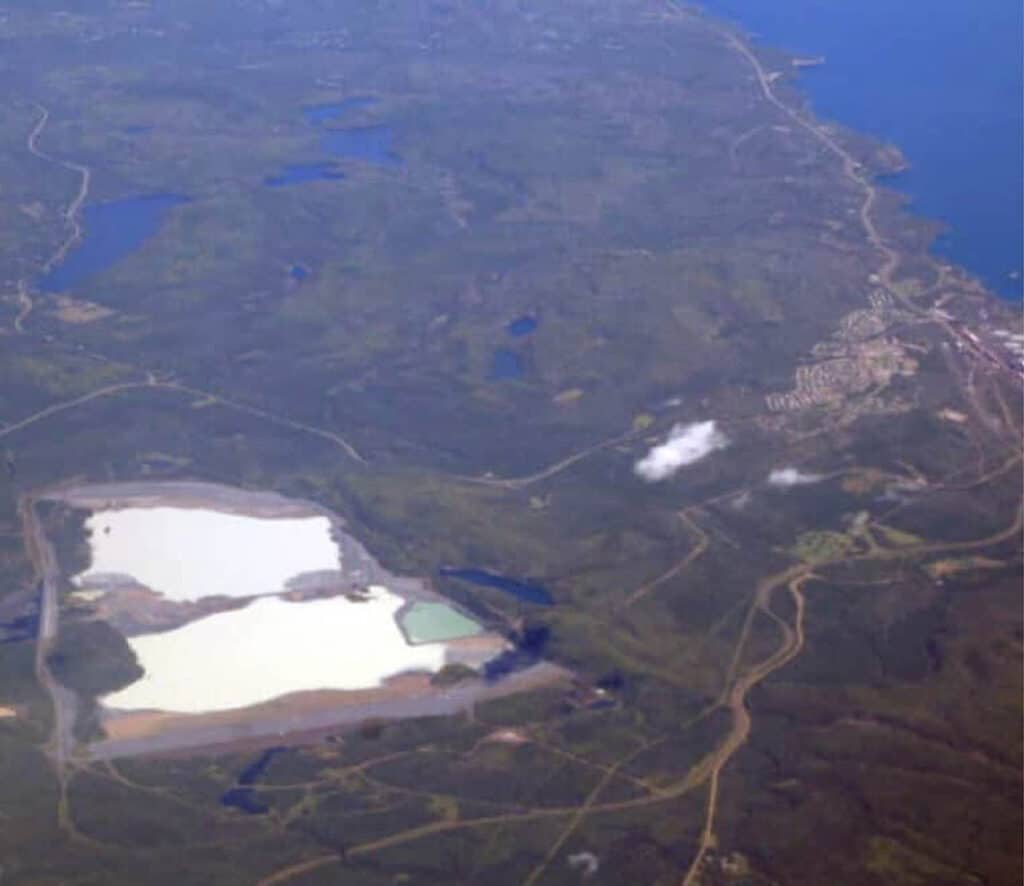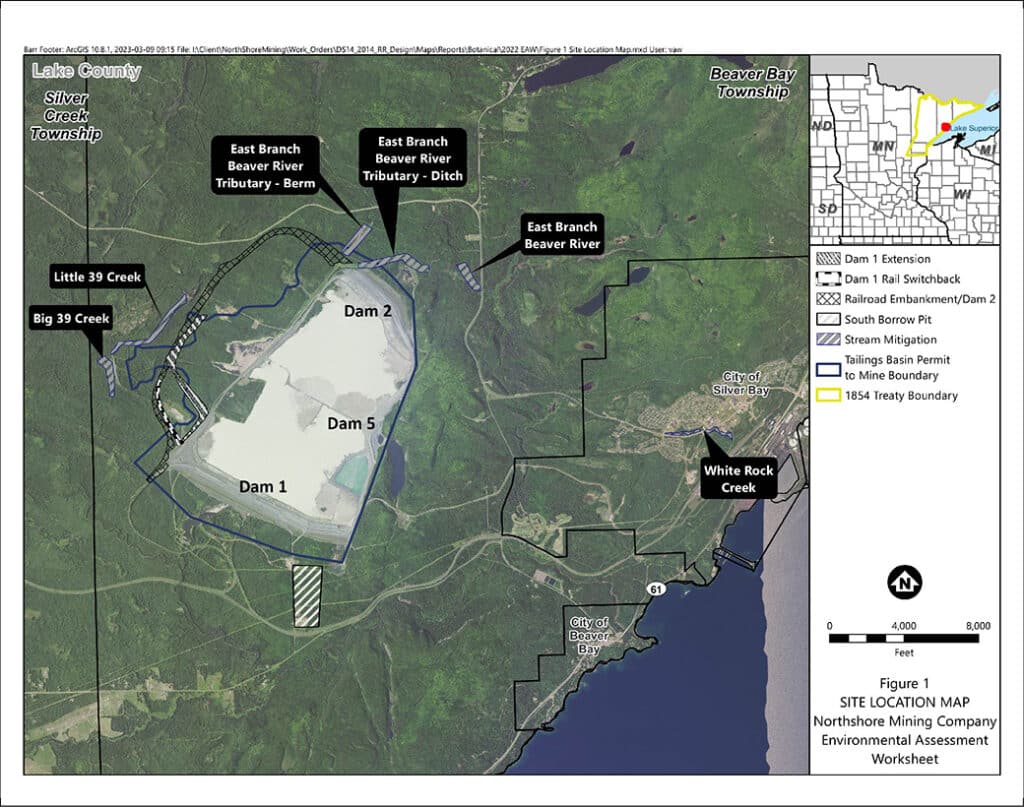
Advocates for clean water warn that a mining project along Minnesota’s north shore could harm human health and the environment in the long term. As a result, one of them filed legal action against state regulators. Before the project moves forward, they request a more comprehensive study to assess the risks at Mile Post 7, a group of tailings ponds. However, the state has decided that a full study is unnecessary because they continue to test and monitor the basin.
Filling the remaining capacity
Cleveland-Cliffs, an Ohio-based company that operates Northshore Mining in Minnesota, is working to fulfill a long-standing permit. The permit allows the 2,150-acre basin near Silver Bay to store taconite-polluted runoff to its full capacity. This could increase the volume six-fold.
WaterLegacy, a Minnesota-based clean water advocacy group, argues that the project needs a more comprehensive study. They are calling for an updated Environmental Impact Statement (EIS) since the last one was completed in 1976. They express concerns about air and water pollutants damaging the surrounding environment and emphasize the potential risks to Lake Superior from a dam failure.
However, the MN DNR states the proposed mining project is safe. In an article by WDIO, DNR Assistant Commissioner Jess Richards said, “We appreciate the public’s comments on the proposed project and their perspectives on the history and regulation of the Mile Post 7 tailings basin.” She added, “Our review confirms that potential environmental impacts from the proposed project align with those studied in prior environmental reviews and/or are subject to robust ongoing regulatory oversight. She went on to add, “Importantly, the Mile Post 7 tailings dams are among the most closely regulated in the state, meeting all applicable safety standards and state dam safety laws.” The most recent Environmental Assessment Worksheet—not to be confused with an EIS—was done in 2022.

Ore has been extracted for decades
Since 1955, miners have extracted taconite in Minnesota, a low-grade iron ore that naturally occurs around Lake Superior. As a result, Northshore Mining has become the largest flat-rolled steel producer in North America. They are also the largest manufacturer of iron ore pellets. In 2020, the facility produced 3.8 million long tons of standard and DR-grade iron ore pellets.
Reserve Mining began operating in Silver Bay in 1955. Located along the shore of Lake Superior, the plant contributed to the formation of a vast delta. This resulted in the accumulation of fine waste rock discharged into the lake. Residents and recreationists noticed changes in the water quality and expressed their concerns. The Environmental Protection Agency intervened and took the company to court in 1973. As a result, the company built holding ponds, and stricter regulations on industrial pollution were established. In 1994, Cleveland-Cliffs took ownership of the plant, and Northshore Mining assumed control. While methods have improved, authorities have cited them for pollution in several incidents.
The company completed the Milepost 7 Tailings Ponds in 1980. The pellet plant in Silver Bay mixes the tailings with water and transports them via pipeline. This pipeline connects to large holding ponds located about three miles from Lake Superior.
Even decades ago, some state regulators had their misgivings about a tailings site at Milepost 7. In a review by the Minnesota Environmental Quality Counsel, a hearing officer stated that “Mile Post 7 is not a suitable location for disposal of Reserve’s tailings and would be contrary to law.” He noted other locations in the state as less hazardous for disposal consideration.

The project
The mining project is multifaceted. The mining company proposal includes relocating the West Ridge Railroad, and extending Dams 1 and 2 while developing stream mitigation across multiple areas. Tailings placement would continue to the final permitted dam elevation of 1,315 feet above mean sea level.
In recent years, the demand for iron-ore pellets has changed. An official said that Northshore Mining will continue to operate intermittently due to low demand. Cleveland-Cliffs told MPR that steel producers are using more recycled steel in their furnaces and don’t need the pellets as often.
The most recent data shows that the basin now covers 2,150 acres of the 2,950 acres evaluated in 1976 (Record of Decision, 2024). The DNR reminded the public that the original evaluation and permitting had set aside 2,950 acres for the disposal of tailings. They said they have analyzed Northshore Mining’s proposal to use the remaining capacity of the tailings basin.
Voices of concern
As required by law, the DNR provided a 30-day public commenting period.
More than 1,300 individuals commented, including environmental advocates, Tribal groups, and other elected officials. Many expressed concern about long-term impact as well as a desire for a more thorough study before the project proceeds.
In its report, the DNR acknowledged, “The DNR acknowledges that the siting of Mile Post 7 was highly controversial and not one that the DNR supported. However, because the decision issued by the Minnesota Supreme Court is binding precedent, the DNR cannot ignore or remake a decision regarding Mile Post 7 and its subsequent use as the site of a tailings basin.”
Some government leaders from the city of Duluth expressed concern about the potential breach of the dam. In a letter to the DNR, they said, “We cannot even say what the effects of a dam collapse might be—because we do not know. The subject has not been publicly studied since the environmental review in the 1970s, and even that study only briefly examined the consequences of a partial dam collapse.”
Environmentalists assert that relying on a nearly 50-year-old study would be irresponsible for moving forward with the mining project. In the news, Paula Maccabee, attorney for WaterLegacy, said Northshore Mining’s proposed expansion of Milepost 7 is “taller and bigger than anything they’ve ever studied before.” She called it “ludicrous” that the DNR is not compiling a new Environmental Impact Statement, the highest level of review.
More information:
- Mile Post 7 West Ridge Railroad Relocation, Dam Extension, and Stream Mitigation Project – MN DNR
- Company seeks to expand massive lake of mine waste near North Shore – The Minnesota Star Tribune
- DNR: No EIS necessary for Mile Post 7 project – WDIO
- Northshore Mining, shut down since last spring, poised to restart – MPR

Wilderness guide and outdoorswoman Pam Wright has been exploring wild places since her youth. Remaining curious, she has navigated remote lakes in Canada by canoe, backpacked some of the highest mountains in the Sierra Nevada, and completed a thru-hike of the Superior Hiking Trail. Her professional roles include working as a wilderness guide in northern Minnesota and providing online education for outdoor enthusiasts.

